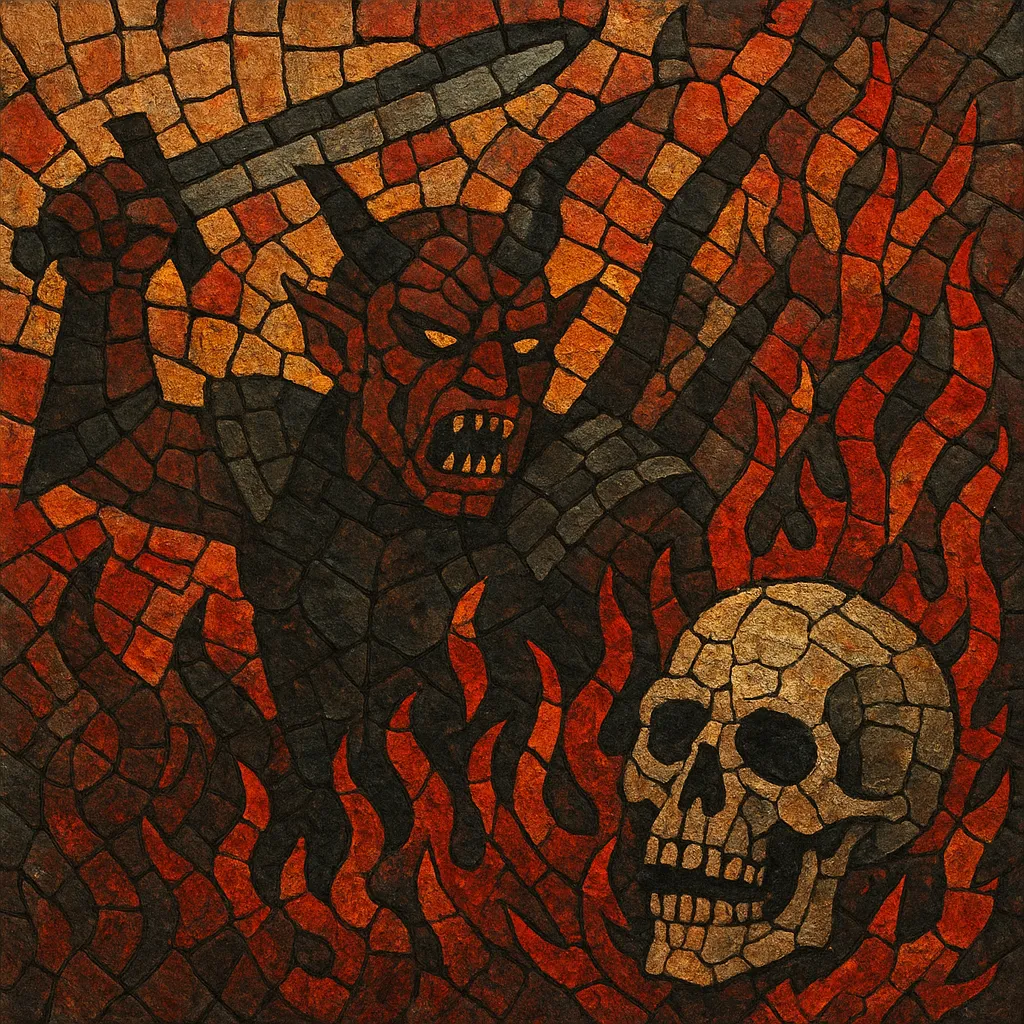War metal is an extremely aggressive fusion of black metal and death metal known for its chaotic, bestial sound. It emphasizes relentless speed, blast-beat drumming, heavily distorted low-tuned guitars, and raw, clipping production that borders on noise.
Rather than melody or intricate harmony, war metal prioritizes density, abrasion, and overwhelming intensity. Vocals are guttural, barking, or cavernous roars, often layered or doubled to create a wall of sound. Lyrical themes center on war, desecration, blasphemy, and apocalyptic imagery, matching the music’s scorched‑earth aesthetics.
Tracks are typically short, violent bursts with minimal dynamic relief, frequent tremolo-picked barrages, and chaotic solos. The overall aesthetic is primitive and deliberately unrefined, evoking the feel of a battlefield bombardment translated into sound.
War metal crystallized in the early 1990s, with roots in the late 1980s underground where early black metal and death/thrash acts pushed extremity to new limits. Canadian band Blasphemy’s 1990 album "Fallen Angel of Doom..." is widely cited as a foundational text, alongside the early, feral work of Finland’s Beherit and the proto‑bestial aggression of Brazil’s Sarcófago. The style’s identity coalesced around relentless tempos, bestial vocals, and deliberately raw production.
As the 1990s progressed, Australia’s Bestial Warlust and Canada’s Conqueror codified the sound with recordings that were shorter, louder, and more violent. The term “war metal” increasingly replaced “bestial black metal” to describe this particular black/death hybrid. In the 2000s, bands like Revenge (Canada), Black Witchery (USA), Archgoat (Finland), and Impiety (Singapore) expanded the scene globally. DIY labels such as Nuclear War Now! Productions, Osmose Productions, and Hells Headbangers helped define the visual and sonic aesthetics through raw masterings, stark artwork, and cult physical editions.
Through the 2010s, war metal’s international presence solidified, with newer flag-bearers like Diocletian (New Zealand) and Proclamation (Spain) maintaining the genre’s ferocity while refining production just enough to preserve impact without losing the primal edge. Festivals and niche circuits provided gathering points for a global following. Despite periodic cross-pollination with blackened death metal and noise-leaning offshoots, the core of war metal remains purposefully unvarnished, valuing intensity and atmosphere over technical display.
Use two heavily distorted, down‑tuned electric guitars (D standard or lower), an overdriven bass, and a drum kit capable of sustained blast beats. Favor analog or gritty digital pedals (e.g., RAT, HM‑2, or similar) with high gain and liberal clipping.
Write tremolo‑picked riffs built from power chords, tritones, and minor seconds to maximize dissonance. Keep harmonic motion minimal and cyclical, prioritizing density and momentum over complexity. Insert chaotic, noise‑leaning solos with whammy dives, pick scrapes, and feedback swells.
Center the drum approach on nonstop blasts (traditional, bomb/war‑style blasts) at 220–280+ BPM. Use rolling double‑kick under blast patterns and keep fills short and violent. Minimizing groove sections preserves the unrelenting feel.
Deliver low, feral growls, barks, or cavernous roars, often double‑tracked for thickness. Lyrics should evoke war, sacrilege, apocalypse, and profane ritual, using concise, striking imagery that complements the music’s brutality.
Compose short songs (often 2–4 minutes) with few breaks. Favor verse‑like riff cycles that escalate intensity, with brief dropouts or noise interludes only to make the next onslaught hit harder. Layer guitars to produce a monolithic wall, ensuring bass is distorted enough to glue the mix.
Record live or live‑feeling basic tracks to capture volatility. Embrace raw, clipping mixes with limited dynamic range; avoid excessive editing or quantization. Use minimal reverb, saturated mids, and tape/analog emulations to keep the sound caustic.
Play with physical aggression and economy—no showy technicality. Maintain unwavering tempo and stamina, keep stage sound loud and abrasive, and project a severe, martial presence.


